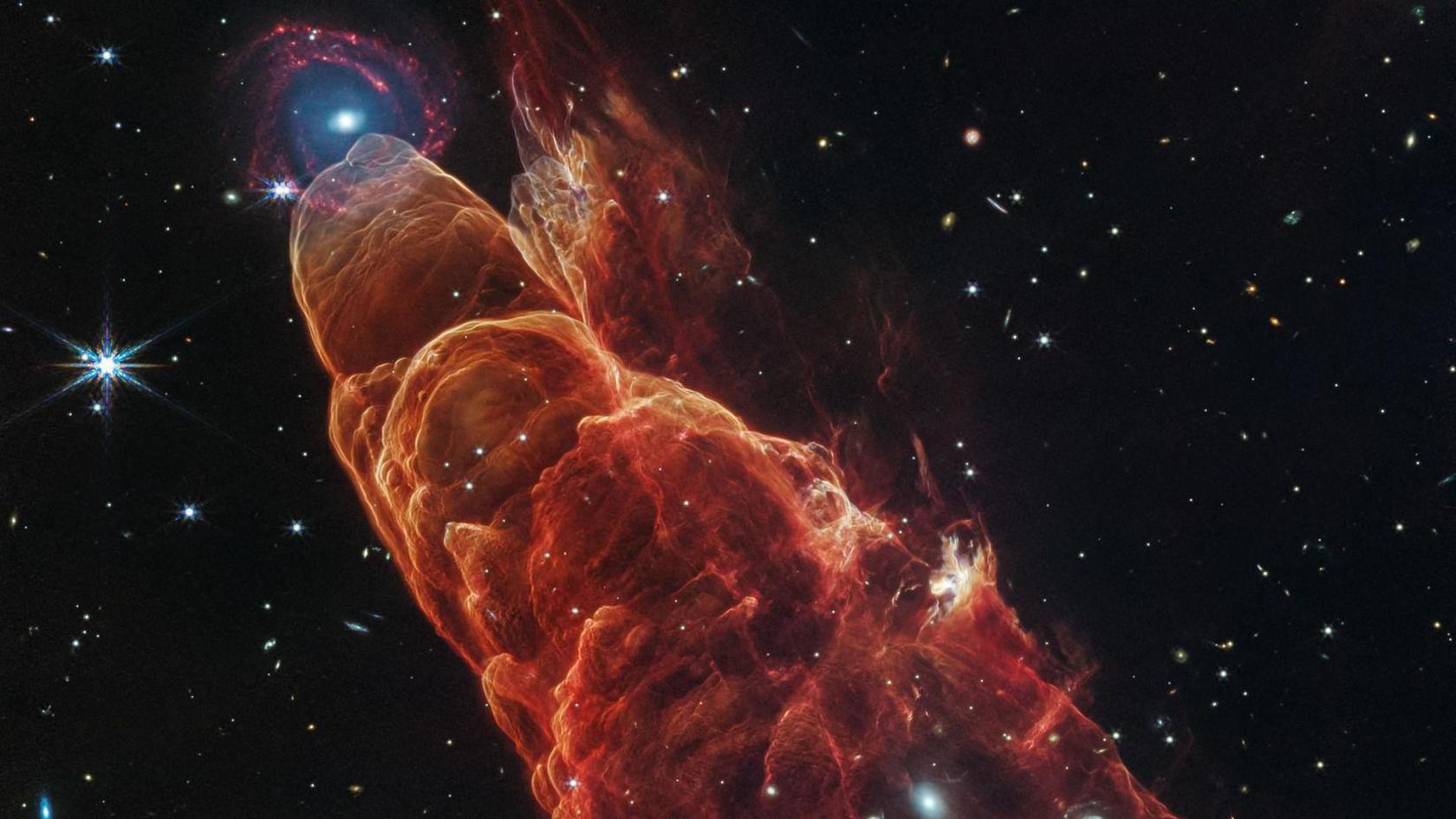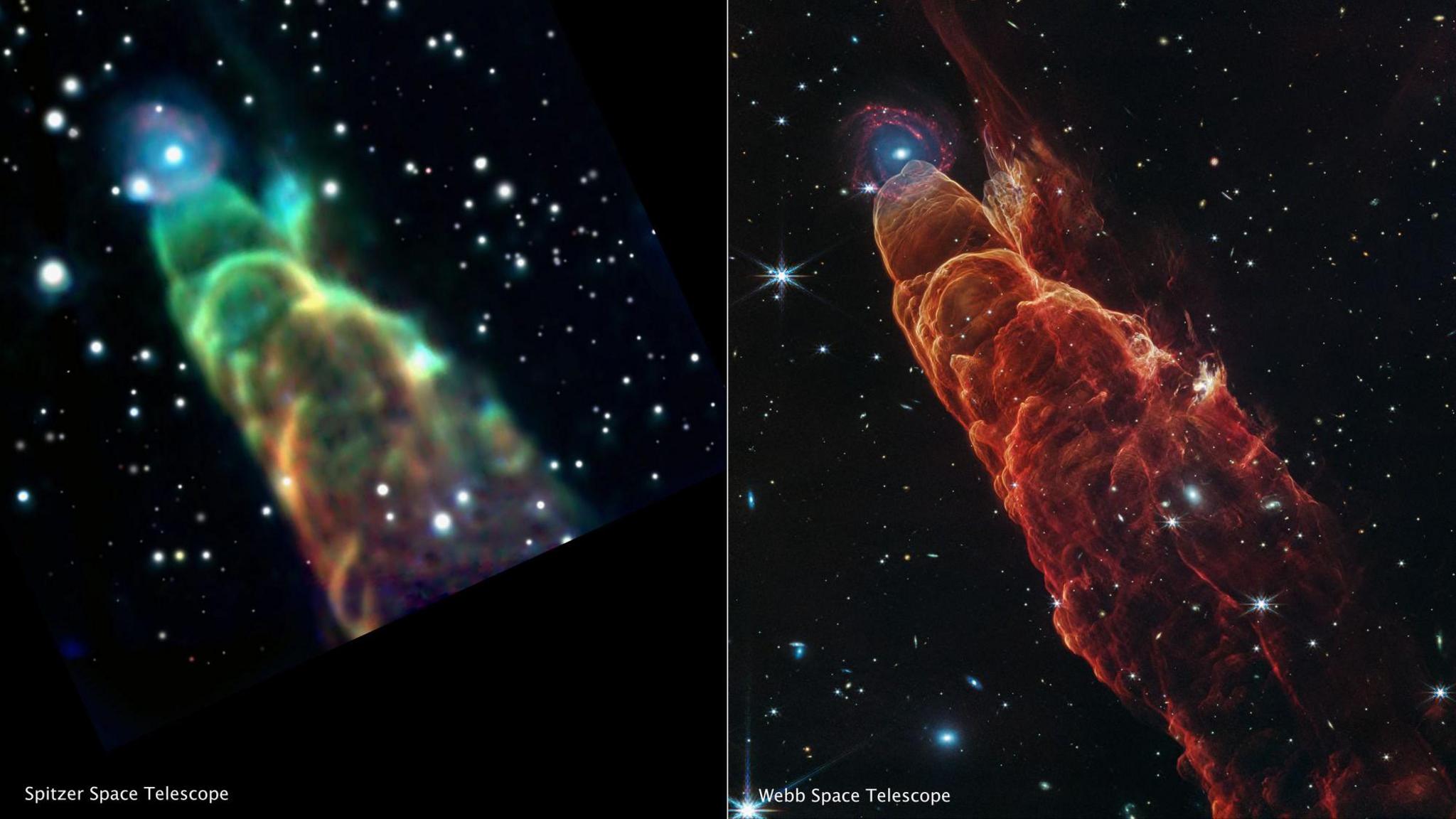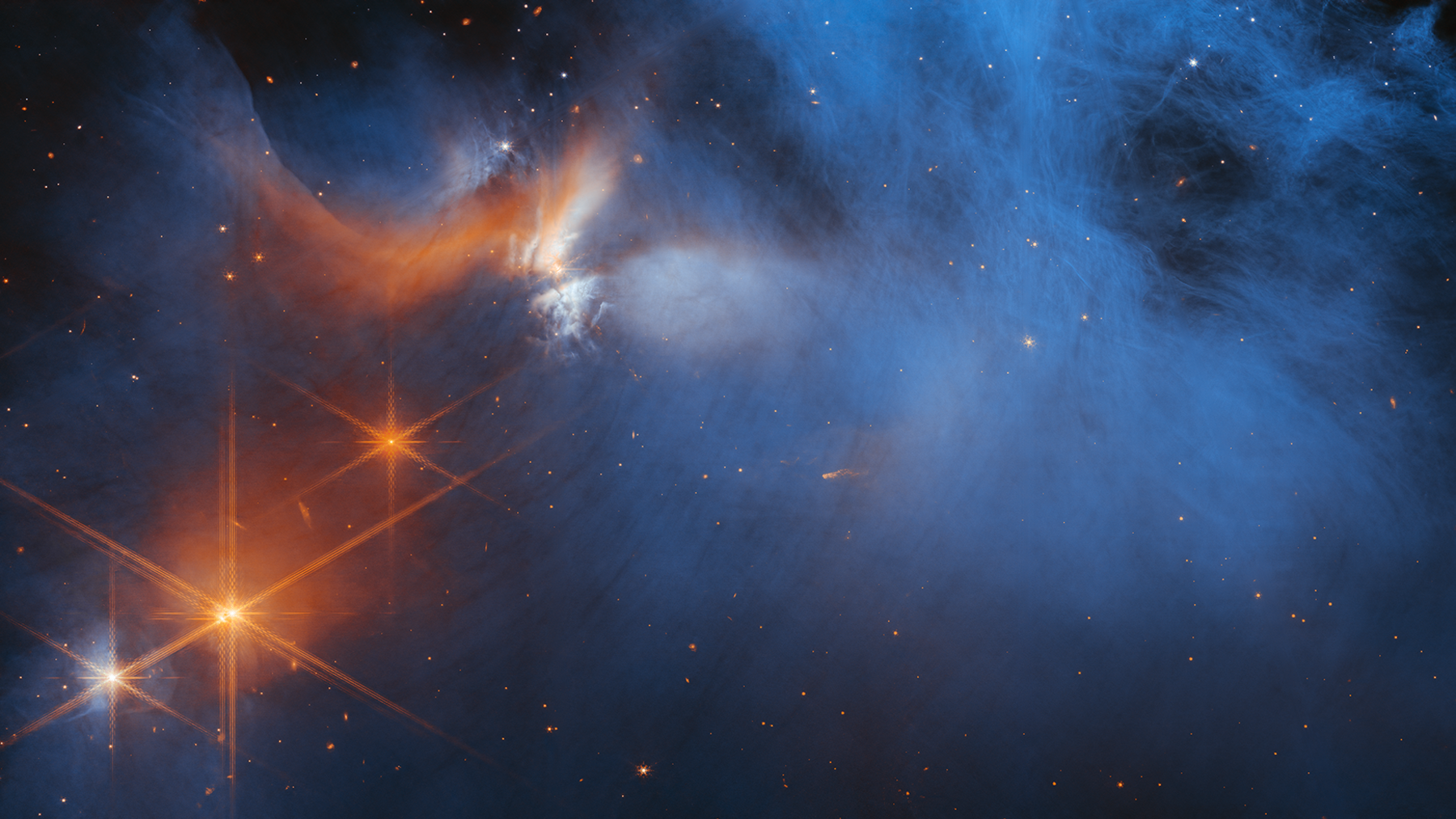Amazing 'cosmic tornado' captured by James Webb Space Telescope

Have you ever heard of a cosmic tornado?
- Published
A brand new image has just been released from Nasa's James Webb Space Telescope, showing an out-of-this-world natural wonder in incredible detail.
This 'cosmic tornado' happened 625 light years away in a part of space where stars are being born.
The amazing jets of light on display are what happens when the outflows of forming stars reach denser parts of space, like dust and gas.
This stellar sight was first seen back in 2006 from an old Nasa telescope, but the new image shows it in much greater detail than ever before.
It's hoped that it might help scientists understand more about how stars form.
More stories like this
Stranded astronauts back on Earth after nine months in space
- Published19 March
Space 2025: What are the big events to look out for?
- Published21 December 2024

The new image on the right brings a whole new level of detail to this cosmic tornado
The sight in the image is called Herbig-Haro 49/50, a jet that's thought to come from a protostar known as Cederblad 110 IRS4.
A protostar is the early stage in the formation of a star, which can produce these outflows as they develop.
Each of these jet outflows can extend for many light years.
A light year is the distance travelled by light in one year, which is the same as about 9.46 trillion kilometres - so it's a pretty long way.
When these jets reach denser material in space, they heat up, and so to cool down, the outflow emits light - some of which can be seen by the human eye, and some of which is infrared.

The Chamaeleon I Cloud complex is around 630 light-years away from Earth, and is the home of the cosmic tornado
The image of the amazing light show, that looks like a tornado in the stars, combines observations from two different cameras on the James Webb Space Telescope.
The sight was first given the name 'cosmic tornado' when viewed from the Spitzer Space Telescope in 2006.
It was spotted in the Chamaeleon I Cloud complex, one of the nearest active star formation regions in our Milky Way galaxy.
Nasa say that the star formation is very similar to the environment in which the Sun might have formed, so we can learn a lot by studying it.
